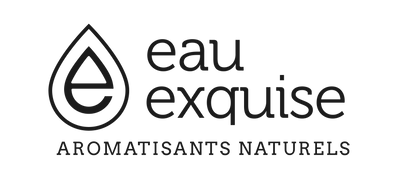<p data-mce-fragment="1"><strong data-mce-fragment="1">Pink October</strong> is an annual <strong data-mce-fragment="1">breast cancer</strong> awareness campaign that runs throughout the month of October. Initiated in 1985 in the United States and widely adopted around the world, this initiative aims to raise awareness about breast cancer, promote <strong data-mce-fragment="1">early detection</strong> and support <strong data-mce-fragment="1">scientific research</strong>. The pink ribbon, the emblematic symbol of the campaign, recalls the importance of solidarity and support for women affected by this disease.</p>
<p data-mce-fragment="1">Breast cancer is the <strong data-mce-fragment="1">most common cancer in women</strong> worldwide, with approximately <strong data-mce-fragment="1">2.3 million new cases</strong> diagnosed each year. Thanks to awareness campaigns like Pink October, screening is improving and the chances of survival are increasing, but the fight is still necessary to continue to <strong data-mce-fragment="1">progress in prevention, treatment and support</strong>.</p>
<h2 data-mce-fragment="1">What is the goal of Pink October?</h2>
<p>The main goal of Pink October is to <strong>raise awareness</strong> about breast cancer and the importance of <strong>early detection</strong>. Many lives can be saved if cancer is detected at an early stage. According to studies, when breast cancer is diagnosed early, the chances of recovery often exceed <strong>90%</strong>.</p>
<p>In addition to raising awareness, Pink October encourages dialogue around cancer, breaking taboos and <strong>promoting solidarity</strong> with those affected. This includes:</p>
<ul>
<li>Sharing information about the <strong>signs and symptoms</strong> of breast cancer.</li>
<li>Promoting screening methods, such as mammography and breast self-exams.</li>
<li>Supporting patients, families and caregivers through events and fundraising for <strong>research</strong>.</li>
</ul>
<h2>Early Detection: A Key Weapon Against Breast Cancer</h2>
<p>Early detection remains one of the most effective ways to fight breast cancer. Mammography, in particular, is a key tool because it can detect <strong>abnormalities before symptoms appear</strong> that can be seen or felt.</p>
<div style="text-align: center;"><img style="float: none;" alt="" src="https://cdn.shopify.com/s/files/1/0565/8669/8885/files/octobre-rose-soutien-psychologique.jpg?v=1729408951"></div>
<h4>
<strong>The different screening methods include</strong>:</h4>
<ul>
<li>
<strong>Breast self-examination</strong>: This procedure allows you to identify any abnormalities such as a lump, irritation or change in the shape of the breasts.</li>
<li>
<strong>Mammography</strong>: This is the gold standard for detecting even small tumors. Women ages 50 to 74 are typically recommended to have a mammogram every two years, but women at high risk may start earlier.</li>
<li>
<strong>Breast ultrasound</strong> and <strong>MRI</strong>: These techniques are often used in addition to mammography to better visualize breast tissue, especially in younger women with dense breasts.</li>
</ul>
<h2>What are the signs to watch for?</h2>
<p>One of the goals of Pink October is to encourage women to be aware of the <strong>early signs</strong> of breast cancer.</p>
<ul>
<li>A lump in the breast or under the armpit.</li>
<li>Changes in the texture or appearance of the breast skin (orange peel, redness).</li>
<li>Abnormal discharge from the nipple.</li>
<li>Persistent pain in the breasts or armpits, although pain is not always a sign of cancer.</li>
</ul>
<h2>Breast Cancer Prevention: What are the Risk Factors?</h2>
<p>Breast cancer prevention relies on understanding <strong>risk factors</strong>. While some causes cannot be changed, such as age or family history, many risk factors are related to our lifestyle and can be adjusted.</p>
<h3>
<strong>Non-modifiable risk factors</strong>:</h3>
<ul>
<li>
<strong>Age</strong>: The risk of breast cancer increases with age, with most diagnoses occurring after age 50.</li>
<li>
<strong>Family history</strong>: Having a mother, sister, or daughter with breast cancer significantly increases the risk.</li>
<li>
<strong>Genetic predisposition</strong>: Certain genetic mutations, such as BRCA1 and BRCA2, greatly increase the risk of developing breast cancer.</li>
</ul>
<h3>
<strong>Modifiable risk factors</strong>:</h3>
<ul>
<li>
<strong>Diet and exercise</strong>: A balanced diet and regular physical activity can reduce the risk of cancer. Being overweight or obese after menopause are also aggravating factors.</li>
<li>
<strong>Alcohol consumption</strong>: Regular alcohol consumption increases the risk of breast cancer.</li>
<li>
<strong>Smoking</strong>: Although its direct link to breast cancer is still debated, smoking is a risk factor for many types of cancer.</li>
<li>
<strong>Exposure to hormones</strong>: Prolonged exposure to hormone treatments after menopause can increase the risk of breast cancer.</li>
</ul>
<h2>Advances in breast cancer treatment</h2>
<p>Thanks to research, breast cancer treatments have evolved considerably in recent decades.</p>
<ul>
<li>
<strong>Surgery</strong>: <strong>Lumpectomy</strong> (removal of the <strong>tumor</strong> or <strong>mastectomy</strong> (total removal of the breast) are common treatments depending on the stage of the disease.</li>
<li>
<strong>Radiation therapy</strong>: Used after surgery to destroy any remaining cancer cells.</li>
<li>
<strong>Chemotherapy</strong>: This treatment is often used before or after surgery to shrink the tumor or prevent recurrence.</li>
<li>
<strong>Targeted therapy</strong>: For some types of breast cancer, including those that have hormone receptors (HER2+), treatments such as <strong>trastuzumab</strong> (Herceptin) can block the growth of cancer cells.</li>
<li>
<strong>Immunotherapy</strong> and <strong>hormone therapy</strong>: Used in some cases, these therapies boost the immune system or block hormones that stimulate cell growth cancer patients.</li>
</ul>
<h2><strong>The importance of support and accompaniment</strong></h2>
<p>In addition to the medical aspects, <strong>emotional and psychological support</strong> plays a crucial role in the journey of breast cancer patients. Pink October is a period during which many organizations mobilize to provide support to patients and their families. Discussion groups, psychological support, and online resource platforms are set up to help patients get through this ordeal.</p>
<p>Associations, such as <strong>"La Ligue contre le cancer"</strong> in France, organize <strong>charity events</strong>, pink marches, and fundraisers every year to finance research and help those affected. This solidarity is a fundamental element in encouraging women not to feel alone in their fight.</p>

